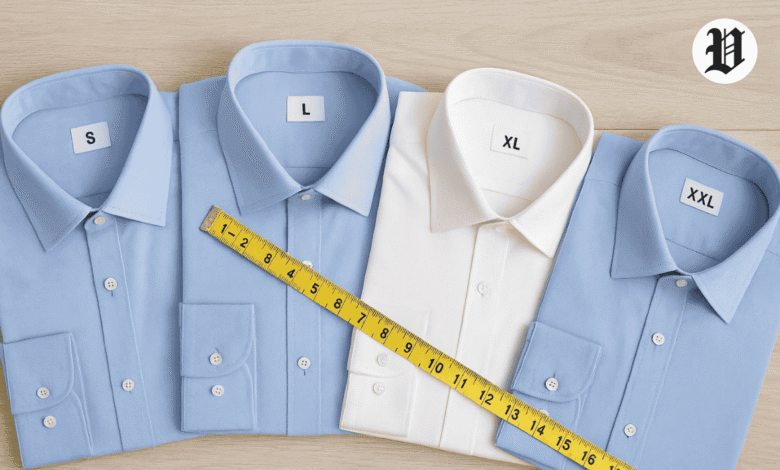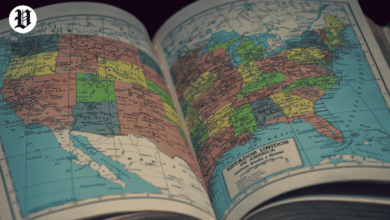
You know that feeling when you slip into a shirt and it just… fits? No pulling at the seams, no extra fabric bunching up—it’s like it was made for you. But let’s be real, how often does that happen? More times than not, we grab something off the rack or click “add to cart” without a second thought, only to regret it later. That’s where understanding men’s shirt sizes comes in handy.
Whether you’re dealing with S, M, L, XL, XXL, or even XXXL, getting it right can amp up your comfort, sharpen your style, and give you that extra boost of confidence. Stick with me here, and I’ll walk you through it all, from the basics to the nitty-gritty details.
Men’s Shirt Size Chart: Understanding Shirt Sizes
Shirt sizes for guys usually boil down to letters or numbers, and honestly, it can feel a bit like decoding a secret language at first. You’ve got your small (S), medium (M), large (L), and so on—these are the alpha sizes. They tie back to chest measurements mostly. For instance, a medium often covers a 38-40 inch chest, while a large jumps to 40-42 inches. Easy enough, right?
But then you hit those crossover questions, like is a shirt size 40 medium or large? It depends, but it typically lands in the medium camp for a lot of brands, though some might nudge it into large if the cut’s on the slimmer side. And what about XL in number sizes? That’s usually around 42-44 inches across the chest. If you’re shopping from different countries, things shift a bit—American and UK sizes are pretty similar, but EU versions use numbers like 52 for XL. It’s helpful to keep those conversions in mind, especially if you’re ordering online from overseas.
Shirt Size Charts
Nothing beats a solid chart to visualize this stuff. I’ve put together one below that covers from S all the way up to 5XL, with chest specs in inches and centimeters. I threw in US, UK, and EU columns too, since those pop up a lot. US and UK are often interchangeable for shirts, but EU goes numeric based on cm.
Quick notes: 44 inches converts to roughly 112 cm, a size 42 shirt in US is generally a large, and size 46 in US? That’s heading into XL territory.
| Size | US/UK | EU | Chest (inches) | Chest (cm) |
| S | S | 46 | 36-38 | 91-97 |
| M | M | 48 | 38-40 | 97-102 |
| L | L | 50 | 40-42 | 102-107 |
| XL | XL | 52 | 42-44 | 107-112 |
| XXL | XXL | 54 | 44-46 | 112-117 |
| XXXL | XXXL | 56 | 46-48 | 117-122 |
| 4XL | 4XL | 58 | 48-50 | 122-127 |
| 5XL | 5XL | 60 | 50-52 | 127-132 |
Use this as a starting point, but remember, brands tweak things their own way.
How to Measure Shirt Size
Alright, time to get hands-on. Measuring yourself isn’t rocket science, but doing it right saves a ton of hassle. Grab a flexible tape measure and maybe a buddy to help if you’re measuring your back.
First off, chest: Stand relaxed, wrap the tape around the broadest part under your arms. Don’t suck in—breathe normally. For sleeve length, start from the middle of your neck base, go over the shoulder, and down to your wrist with a slight bend in the elbow. Collar for dress shirts? Circle your neck loosely, adding about half an inch so you can actually swallow. And shirt length: From neck base straight down your spine to where you like the bottom to sit.
When it comes to men’s dress shirt sizes, those numbers like 16 32/33 mean neck size (16 inches) and sleeve range (32 to 33 inches). Here’s a quick table to link neck to overall size:
| Neck Size (inches) | Dress Shirt Size |
| 14-14.5 | Small (S) |
| 15-15.5 | Medium (M) |
| 16-16.5 | Large (L) |
| 17-17.5 | XL |
| 18-18.5 | XXL |
| 19-19.5 | XXXL |
This way, your formal shirts won’t feel like they’re plotting against you.
XL, XXL, XXXL Explained
Bigger sizes get their own spotlight because they’re not just “large plus.” XL in number form is often 42-44 inches chest-wise, great for guys with a bit more build, especially in sportswear XL where you need room to move. XXL size in cm? That’s around 112-117 cm, perfect for plus size button up shirts that still look put-together.
Then XXXL shirt size steps up to 46-48 inches (117-122 cm), common in business shirt size charts for that professional vibe without the squeeze. Sportswear might be baggier, business more structured—pick based on what you’re doing.
Regional Size Conversion
If you’re bouncing between regions, a fast conversion table is a lifesaver. Here’s one for popular EU to US shifts:
| EU Size | US Size |
| 42 | M |
| 44 | L |
| 46 | XL |
So EU 42 is like a US medium, EU 44 large, EU 46 XL. Oh, and if you’re thinking shoes while shopping, shoe size 44 in US is about 10.5-11 for men, but hey, focus on the shirts.
Common Questions About Shirt Sizes
People trip up on the same stuff all the time. Like, shirt size 42 means XL or XXL? Mostly XL, but XXL if the brand runs small. Is 40 medium or large? Leans medium, fitting 38-40 inches snugly.
What size shirt should I wear by chest size? Simple—measure and match: 38-40 for M, 42-44 for XL. Clears up a lot of guesswork.
Tips for Perfect Fit
Brands aren’t consistent, that’s the truth. ASOS might hug tight for that modern look, Zara’s got a Euro slimness, and Ralph Lauren? Classic and roomier. My advice: Try stuff on when you can, or dive into their size guides—like the ASOS shirt size guide is pretty spot-on. Online? Peek at return policies. And don’t forget, fabrics matter—stretchy ones forgive more.
FAQs
What size is 44 shirt in US?
In US terms, a 44 shirt size usually means XL, good for a 42-44 inch (107-112 cm) chest. Double-check the label though.
What is XL size in number?
XL size in number is typically 42-44 inches around the chest, standard for most tees and polos.
How do I measure my chest for a shirt?
Just wrap the tape around your chest’s widest spot, arms down, and keep it level. Easy peasy.
What is XXL size in cm?
XXL size in cm comes out to about 112-117 for the chest, giving extra space without drowning you.
Shirt size 42 means XL or XXL?
Shirt size 42 usually means XL, but it could feel like XXL in looser cuts—depends on the style.
Is 40 size shirt medium or large?
A 40 size shirt is often medium, especially for 38-40 inch chests, but some call it large.
What is the largest shirt size available?
Largest shirt size available? Goes up to 5XL or higher, covering 50-52 inches (127-132 cm) and beyond for big and tall.
How do men’s dress shirt numbers (16 32/33) work?
Those men’s dress shirt numbers like 16 32/33 break down to neck (16 inches) and sleeves (32-33 inches long).
What is the difference between XL and XXL?
Difference between XL and XXL? About 2 inches more in the chest—XL 42-44, XXL 44-46, plus a bit extra all around.
How to convert EU 44 to US men’s size?
Converting EU 44 to US men’s size lands you at large (L), for roughly 40-42 inch chests.
Conclusion
At the end of the day, nailing shirt sizes is about knowing your numbers and checking charts. Jot down your measurements somewhere handy and glance at a men’s shirt size chart before buying. You’ll thank yourself when everything fits just right.




